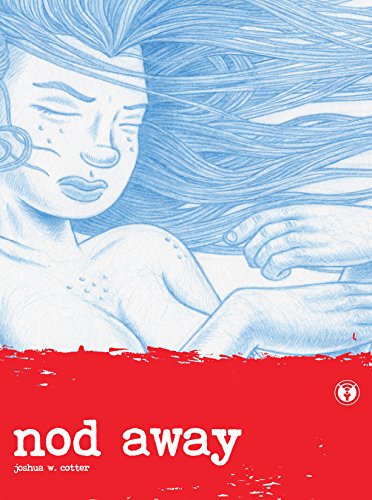Solaris-on-Omelas: Reading Joshua W. Cotter’s “Nod Away Vol. 1”

It’s to my chagrin that I hadn’t heard of Joshua W. Cotter’s graphic novel Nod Away Vol. 1 before this year. What brought it to my attention? A post on social media by the writer and editor Sam Thielman earlier this year noted that Cotter had experienced low sales for the second volume of this series and was no longer sure if he’d be able to complete the full seven volumes. I tend to agree with Thielman’s recommendations, and so I looked at a few pages of Nod Away and ended up ordering the first volume. When I sat down to read it, what I got was a fantastic lesson in pacing, slow-burning plot developments, and philosophical science fiction.
I’ll be honest: one of the things that pulled me in about this project was its ambition. (I still have a copy of Adam Hines’s Duncan the Wonder Dog: Show One on my shelf, and still hold out some hope that a second volume will show up one of these days.) But Nod Away Vol. 1 also tells a largely standalone story of its own, one of a scientist experiencing personal and professional frustrations while working on a satellite in the near future.
[Spoilers follow; normally, I wouldn’t put a warning like this in here, but this is definitely a book where knowing as little as possible about where things are headed will likely make for a better reading experience.]

The protagonist for much of the book (more on that momentarily) is Dr. Melody McCabe, and when the book opens she’s on her way into orbit on a commercial space flight. The project she’s been working on for years is a kind of telepathic internet, one which the vast majority of humans are compatible with, but for which a few are not, Dr. McCabe among them. Upon her arrival, she finds herself dealing with various dilemmas that frustrate her more and more, from an issue stemming from her arrival time to a colleague who can’t quite seem to parse that she has no interest in dating him. She does maintain a flirtatious level of banter with another colleague, however - and there’s the matter of her partner back on Earth, from whom she seems to be becoming estranged.
Throughout Nod Away Vol. 1, there are a lot of images of Melody sitting by herself, looking worn down by the various crises happening around her. Cotter’s artwork reminds me at times of that of Carla Speed McNeil, in that both do a fine job evoking subtle gestures in body language and have an ability to draw a diverse cast of characters. Cotter can also shift into a slightly cartoonier register, which works well with some of the book’s more buffoonish supporting characters. There’s one astronaut in particular whose good-old-boy slang and mannerisms make him feel like a caricature of the worst aspects of a very American gung-ho sensibility.
On the orbital space station, there are two main projects afoot. The first is the “innernet,” which requires a human child to act as a kind of organic switchboard for the mental processes of billions. The other is some sort of portal to its counterpart located on a spacefaring vessel a significant distance away. Melody’s work on the former gives the first half of Nod Away Vol. 1 much of its background, but it’s the latter that sets the plot of the book’s second half into motion. And it points to a narrative motif that you should be mindful of if you ever suspect you’re a character in a science fiction story: if teleportation is being discussed and you’re not in the Star Trek universe, run.
Interspersed with the story of Melody McCabe are shorter interludes featuring a man exploring a desolate landscape and occasionally making brief utterances. Is he on a distant planet, or a post-apocalyptic Earth? It’s not clear, though the periodic head trauma he suffers left me concerned about his health multiple times as the narrative progressed. Years ago, a friend introduced me to Vaughn Bodē’s The Man, and Cotter’s work here taps into that same level of primal, elemental storytelling — of one figure making their way through a harsh landscape.
The subtle shift of Nod Away Vol. 1 from science fiction workplace comedy into something much more uncanny makes this volume well worth checking out on its own. But there are also plenty of hints of a larger story afoot, from the arrival on the scene of a new character in the second half to the way Cotter’s linework breaks down into its components to signify a scene transition. There are also some breathtaking things done here with page structure; Cotter is equally at home telling a story in a grid format and in just shattering that structure to grand effect.
In a recent update on his Instagram, Cotter revealed that he’s completed 600 pages of the total Nod Away project, which he estimates will eventually weigh in at around 1,800 total pages. The second volume of this is out in the world, and Cotter has shared pages from the in-progress third volume on his website, along with a reference to an ongoing fundraiser for the project. “I would like to be able to finish up ‘Nod Away’ before I lose the ability to hold a pen to old age,” Cotter writes. Here’s hoping he gets the support he needs to finish this innovative, mesmerizing work.